Research Stay in Southampton by Evridiki Chrysagi (Nov 23)
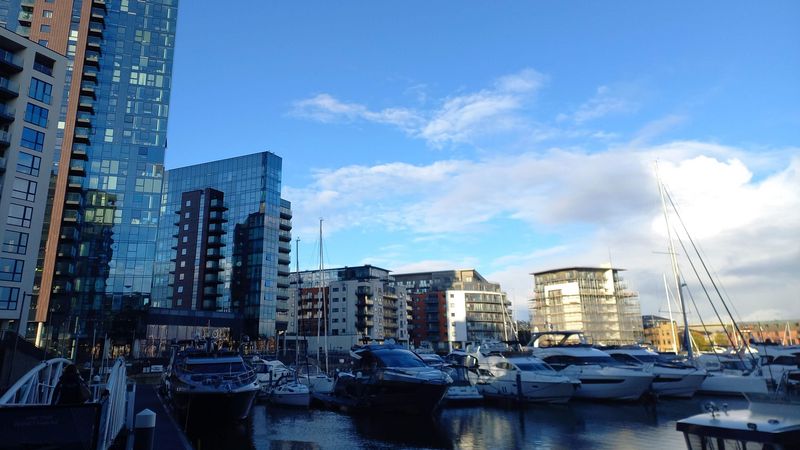
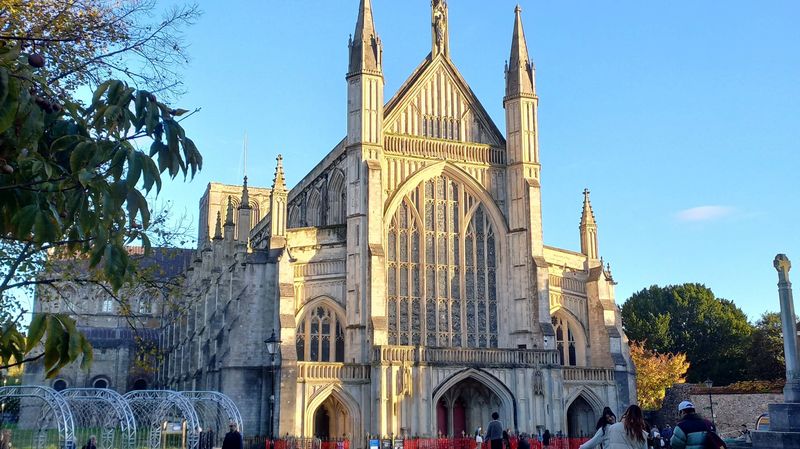
In November of last year, I had the opportunity to visit Southampton, UK, and spent a month at the National Oceanographic Center (NOC). Upon my arrival, I found myself in the midst of a literal and metaphorical storm. Shortly after reaching Southampton, a severe storm hit the area. My landlord advised me to stay indoors, and my host had to cancel our initial meeting due to closed bridges preventing access to the institute. While the physical storm passed after a few days, I still had to “weather the storm” of proposal writing. With the deadline for the third phase of the TRR approaching in mid-November, I dedicated a significant amount of my time to the proposal writing.
My main host, Alberto Naveira Garabato, a distinguished expert on submesoscales processes and mixing, proved to be not only a brilliant scientist (recently awarded the Fridtjof Nansen Medal) but also a warm and welcoming person. Bieito Fernandez Castro was also a great host, so I really enjoyed working at NOC. We had several meetings to discuss my results, and Alberto was very enthusiastic about my Baltic Sea simulations, saying he now understands why the Baltic is considered an ideal natural laboratory. We plan to write two joint papers: one focusing on the submesoscale instabilities and the vorticity generation above sloping topography, and another one (hopefully) focusing on the generation of submesoscale eddies in the oceanic interior and the lateral exchange of properties between the boundaries and the interior of the ocean. During my research stay, I also had the opportunity to present my work at the physical oceanography seminar at NOC, attend various seminars, and meet and discuss with many people. Exploring Southampton and its surroundings, I visited the local pubs with different groups of colleagues, further enriching my experience.
As the saying goes, “After every storm, the sun always shines”, and indeed, my experience in Southampton was a testament to this. I would therefore like to thank TRR for funding my research visit. It was a unique experience and I would strongly recommend and encourage everyone to seize the opportunity to visit other institutes and universities.
Research Stay in Boston by Tridib Banerjee (Oct 23)
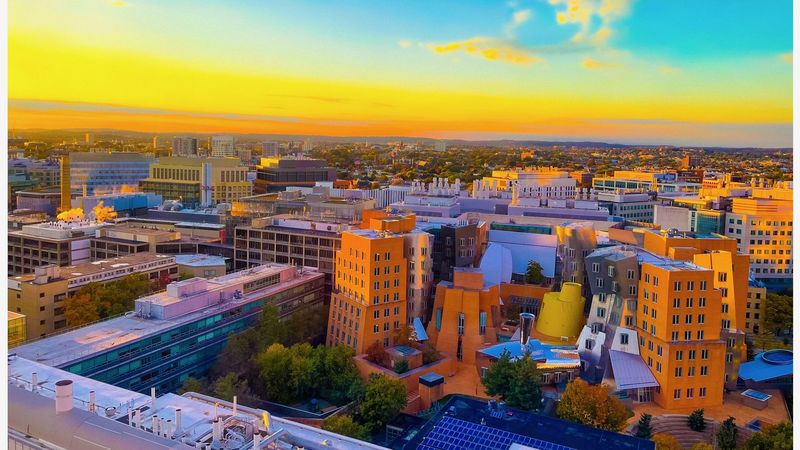
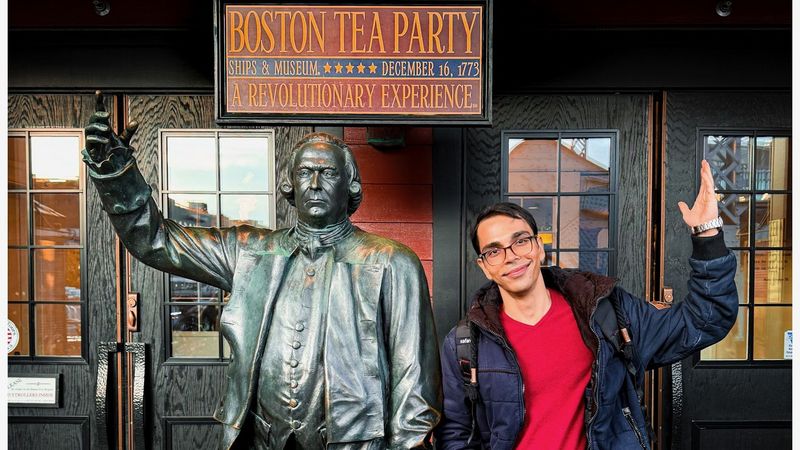
Hi, my name is Tridib and this is a short report on my 2 months research stay at Massachusetts Institute of Technology, Boston, United States.
There is no way to begin this report without first thanking everyone involved in making it happen. I would like to express how grateful I am to everyone from TRR who helped me through the entire research stay. From planning to securing of funds. To the organizers and the Vorstand, thank you so much. I would also like to thank the responsible people from Constructor university for expediting the fund disbursement so that I could pursue the research at my desired dates. I would also like to thank my supervisor of the research stay Prof. Raffaele Ferrari, for being a terrific mentor (alongside postdoc Simone Silvestri) and sponsoring the discretionary funding to Massachusetts Institute of Technology. I would further like to thank Massachusetts Institute of Technology for making my immigration to US very easy. I would like to thank also my supervisor at TRR – Prof Sergey Danilov for always being available for consultations and helpful discussions and finally, also my current collaborators who kindly shared my workload so that I could focus on the research stay. Thank you all.
I joined the Climate Modelling Alliance to work in collaboration with California Institute of Technology and NASA, Jet Propulsion Laboratory. My role was to join the ocean modelling team at Massachusetts Institute of Technology and help them diagnose their new advection scheme using a diagnostic technique Me, Sergey Danilov, and Knut Klingbeil developed during my PhD. It was a great experience and I learned a lot during the process. Unlike the ocean model that I had worked with in Alfred Wegener Institute, the one I had to use during my research stay ran on GPUs instead of CPUs. This shift of compute architecture meant rethinking of even the fundamental mathematical operations. The work was initially planned to be concise but later, we realized it to be bigger and more important than expected. We ran several interesting experiments and, in the end, we began writing a new manuscript together. Currently, we are running more experiments and working towards finishing our manuscript. In summary, the stay in Boston impacted my career way more than I thought.
While I had my fair share of work to do in Boston, I also enjoyed my time there a lot. I fell in love with their research culture and found a family in my land-lady who was so generous and kind to me during my whole stay. I also went to Michigan to visit my actual family, watch my very first American Football, that too a classic Ohio versus Michigan which Michigan surprisingly won (it was a total pandemonium), and also have my very first American thanksgiving. I was extremely scared going to US but I had nothing but only fun during my entire stay. I would definitely do it again.
Research Stay in Lyon by Mohamed Mossad (Oct 23)
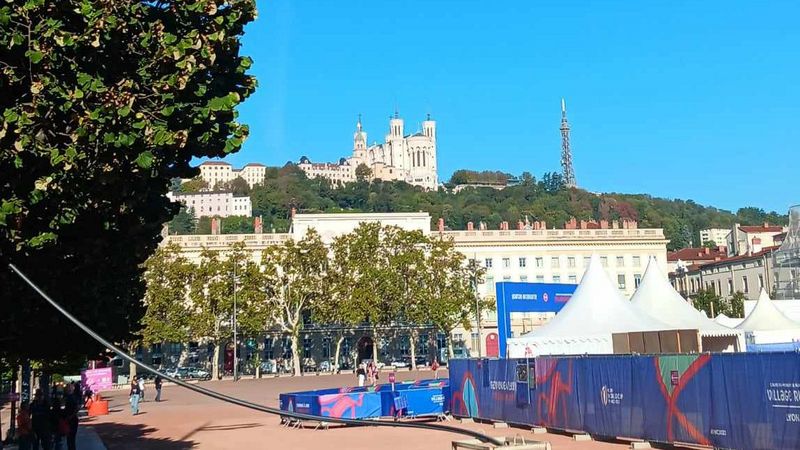
Exploring Atmospheric Dynamics
From the 1st of October and until the 14th, I had the opportunity to embark on a short research stay in Lyon, France, funded by the project TRR181 at École Centrale de Lyon. This period was not just a chance to collaborate and learn but also a stepping stone in my understanding of atmospheric dynamics, particularly regarding gravity wave (GW) spectra.
My time in Lyon was spent working alongside Raffaele Marino (scientist at CNRS, France) and the team at the Laboratory Mechanical Des Fluides Et D'acoustique (LMFA). The environment at LMFA was not only academically stimulating but also warmly welcoming, fostering both professional growth and personal connections.
One of the most enlightening aspects of this visit was the shift in my perspective on the processes which contribute to the canonical GW spectra. Discussions about turbulence and the scaling of gravity wave spectra opened my eyes to the broader physics underlying these phenomena. It was a transition from focusing merely on the slope of gravity wave spectra to understanding the vast, open-ended field of their scaling.
A highlight of my stay was exploring the relationship between the Froude number and statistics (kurtosis) of velocity and temperature fields. Although time constraints didn’t allow for its application on lidar data, the concepts presented were inspiring and thought-provoking.
Our work concentrated on validation of spectra from direct numerical simulations (DNS) against lidar data, scrutinizing how different wind regimes affect GW spectra. This involved a detailed comparison of integrated kinetic energy/scalar spectra with lidar data.
Leaving Lyon, I am armed with an array of studies and topics to delve into, especially regarding the comparison with DNS regimes. These studies are pivotal in enhancing our interpretation of GW data from lidar measurements. I am optimistic about the continuation of this collaboration in the future and the potential for significant findings.
Beyond the academic realm, Lyon itself proved to be a delightful experience. The city's transportation system was notably efficient which made commuting a breeze. The streets of Lyon are filled with friendly faces, many of them young students, also the 2023 Rugby World Cup was taking place there which added a lively and diverse vibe to the city. École Centrale de Lyon, nestled in this vibrant environment, struck me as an exceptional place for study and research, providing many chances to do sports as well.
I extend my deepest gratitude to the entire team at LMFA for their hospitality and support. Special thanks go to Rafaello Foldes and Fabio Feraco (IAP) for their invaluable help in answering my questions and assistance with data provision.
My research stay in Lyon was not only productive but also immensely rewarding. It has broadened my understanding and has surely impacted my approach to atmospheric science. I am grateful for this experience and hopeful that my contributions, though a fraction, have added value to our collective research endeavors.
Research Stay in Perth by Mira Schmitt (Oct 23)
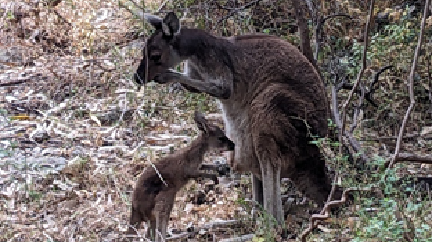
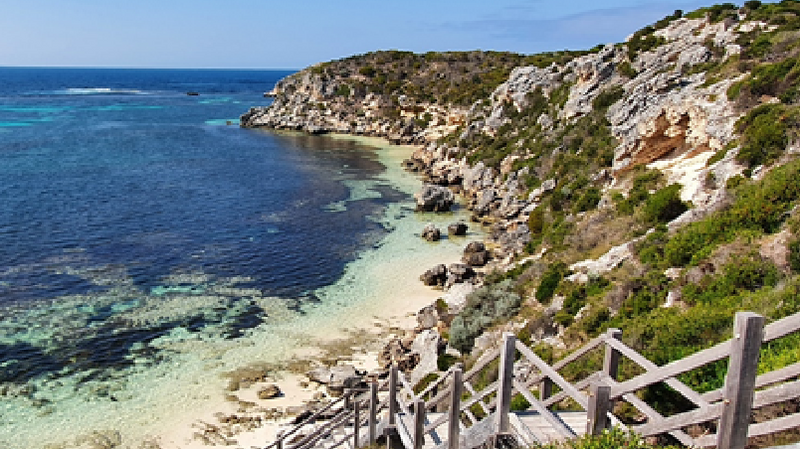
At the end of last year, I spent two months in Perth, Western Australia, to work on a collaborative project with Jen-Ping Peng, who was a PhD in TRR181’s first phase and is now a PostDoc in the working group of Nicole Jones at the Indian Ocean Marine Research Centre of the University of Western Australia. For the most part, my stay in Perth was covered by the Australia–Germany Joint Research Cooperation Scheme, with the TRR kindly providing some additional financial support. The above scheme is an initiative of Universities Australia and the German Academic Exchange Service (DAAD) for the support of international academic cooperation. Early-career researchers from Australia and Germany are encouraged to hand in proposals for a joint research topic, and, if approved, the grant covers the expenses for a research stay at the partner institute. For our project, Jen-Ping and I decided that we want to combine our two fields of research and investigate the interactions of diurnal warm layers, submesoscale fronts and other turbulent processes in the surface mixed layer. For this, we firstly extended the 1D turbulence model GOTM to include 3D frontal effects and validated our model results by comparing them to published LES studies. Then, we used our model to recreate measurements taken previously during two campaigns in the Baltic Sea and the Indian Ocean and use the results to understand the governing processes involved. We found nice agreements between the measurements and our simple model and are planning on publishing two joint papers on these topics.
But besides the work aspect, Western Australia was also a great place to explore and spend time. Jen-Ping was an excellent host (I think we went to every great Asian restaurant in all of Perth) and the weather was pleasant from beginning to end (basically nothing but sunshine for two months). I stayed in a researcher accommodation on campus, which is located a few kilometres away from the city centre directly at the Swan river estuary with lots of green areas and beautiful old trees. Moreover, I got to go on two nice road trips up and down the coast, explore the Margaret River wine region, see quokkas on Rottnest Island and snorkel in the beautiful Ningaloo Reeve national reserve with an infinite amount of fish, stingrays and even a big sea turtle. I also got to see a living colony of stromatolites, microorganisms that are believed to be the oldest form of life on earth dating back 3 billion years, and that can only survive in hypersaline estuaries like Shark Bay in Western Australia. And while there were a few snake and spider sightings, I didn’t have the heart to look up their level of toxicity, so I like to believe it was all safe and sound.
I can definitely recommend looking into the Joint Research Cooperation Scheme (it exists not only between Germany and Australia, but also other countries) and would strongly encourage others to take the opportunity to extend their network and travel, maybe to Perth, it’s a lovely corner of the world. I would like to thank Jen-Ping, Nicole Jones and all other members of this working group for hosting me, showing interest in my research and teaching me about their fields of research.
Research Stay in Hokkaido by Nicolas Dettling (Nov 23)
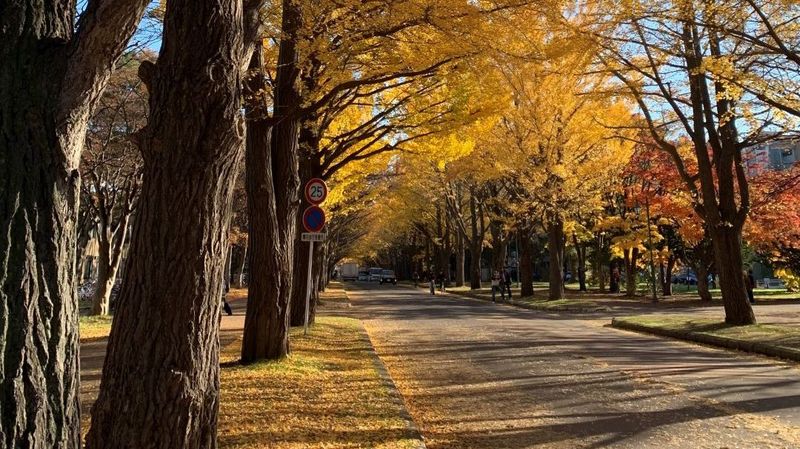
My name is Nicolas Dettling, I am a PhD student in subproject T3 „Energy Transfers in Gravity Currents“. So far I have worked on applying and improving eddy parameterizations in the presence of gravity currents, such as the ones exporting dense water from the Antarctic continental shelves. Now, it is time to apply what we have found in idealised models to regional models of the Antarctic marginal seas.
For this purpose, I visited Prof. Yoshihiro Nakayama and his research group at the Institute for Low Temperature Science at Hokkaido University, Japan in November. Over the last years, Prof. Nakayama and his group have set up a number of regional ocean model simulations targeting key questions concerning the dynamics of the ocean around the Antarctic continental shelf and slope. Over the course of three weeks, I was introduced to a model of the Cape Darnley region, where dense water flows down the continental slope into the abyssal ocean, providing a nice test case for my previous parameterization work. I learned how to set up, run and interpret the model at different resolutions and we discussed the steps towards applying an eddy parameterization in the model. I am very grateful for the support and the fruitful discussions during my time at the institute.
The Hokkaido University campus is centred around a park and every morning I would walk along the Ginkgo Avenue enjoying the autumn colours on my way to work. Fortunately, there was also time to explore the City of Sapporo and the beautiful nature of Hokkaido, where the first snow of the season had already arrived. Luckily, the next Hokkaido Soup Curry or a bunch of Gyozas (fried dumplings) were never far away to recover after working or travelling.
I genuinely enjoyed to work in Japan and to engage in this cultural exchange. I would like to thank Prof. Nakayama and his group for their hospitality and I am very much looking forward to working together again in the future. Finally I want to thank the TRR 181 for funding the research visit.
Research Stay in Douai by Mouhanned Gabsi (Oct 23)
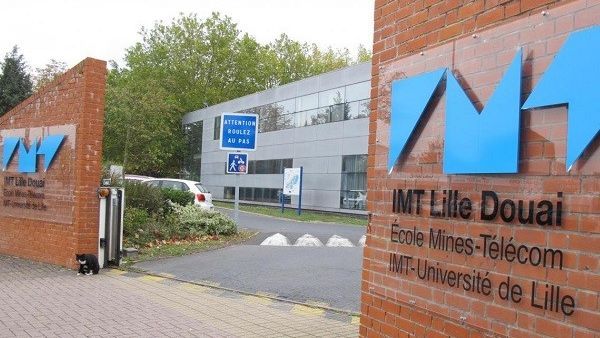
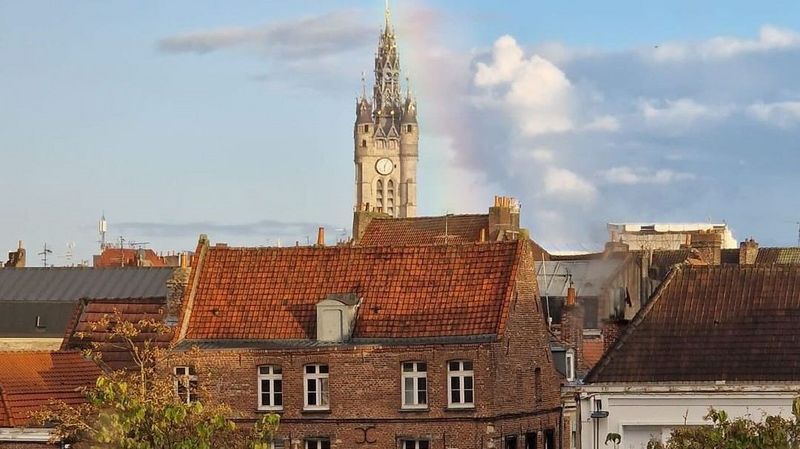
After completing a 1-month research stay at the Centre for Materials & Processes (CERI MP)- IMT Nord Europe in Douai, I feel it is an important moment to reflect on how the stay has informed my work, including key research findings, implications and emerging questions.
My intention in working in Douai as a visiting researcher was to experience another academic reality, build a professional network and identify possibilities for future research collaborations.
From October 2nd to October 31st, I had the great opportunity to visit Prof. Modesar shakoor at the IMT Nord Europe’s Centre for Education, Research and Innovation in Materials and Processes. The IMT (Institut Mines Télécom) Nord Europe is a French graduate school of engineering. It is located in the Hauts-de-France region, shared between 2 campuses: the science campus of the University of Lille (Villeneuve-d'Ascq, European Metropolis of Lille); and the city of Douai. The school trains high-level engineers and scientists (Master and PhD level) in various technological fields including Digital Sciences, Energy and Environment Eco-Materials, Industry and Civil Engineering.
The working environment in the research center was very vivid and enabled a productive exchange of knowledge. I received a lot of useful input regarding my PhD topic and was supported in any possible way. This leads me to clarify some doubts related to my current work. I have been able to further develop and improve a big part of my PhD.
I shared the office with Sarabilou, a Phd Student who is working in the same field of interest. This provided me an opportunity to have some interesting discussions with him on various topics.
During my research stay, Prof. Modesar recommended that I learn and experience some deep learning tools and for this, he proposed some online tutorials related to specific class of artificial recurrent neural network (RNN) architecture called the Long Short-Term Memory (LSTM) neural networks implemented in Python with the TensorFlow library. I used the LSTM to solve the 1D wave equation and 2D heat equation. Our regular meeting and discussions lead to a possibility for future research collaborations in this direction.
Although my stay abroad was shortened, the experience was still great and the journey was worthwhile. I got to know interesting personalities. The people I met in the Student Residence were extremely welcoming, supportive and easy to talk with.
Lastly, I believe the networking I have done throughout this experience will become valuable in the future and am very grateful to have made so many valuable contacts.
I would like to thank the TRR181 for enabling and financially supporting this research stay abroad.
Research Stay in Pusan by Ekaterina Bagaeva (Sep 23)
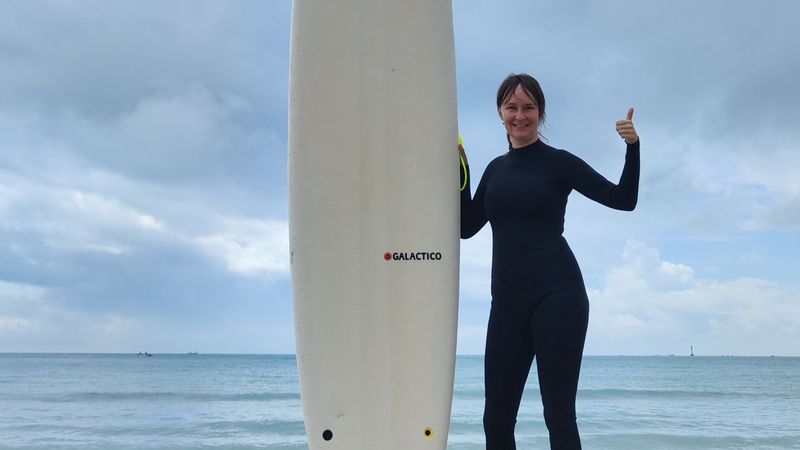
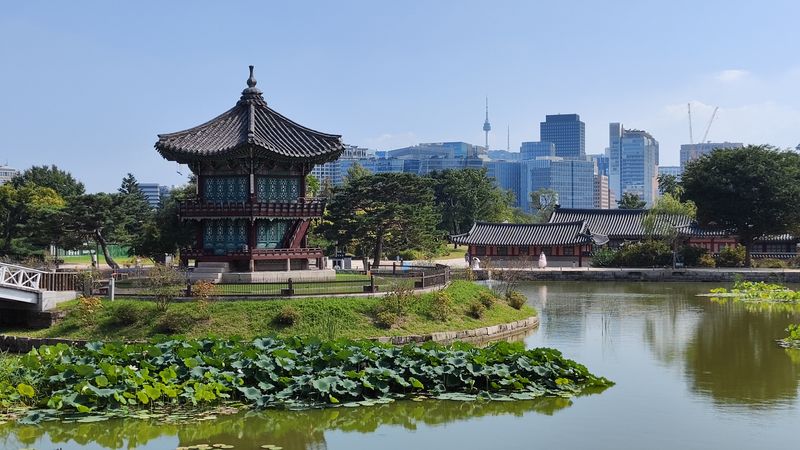
Text: Ekaterina Bagaeva
Since the end of 2022, the topic of research stay slowly began to appear in our discussions with my supervisor. We were considering various research groups studying eddies' modeling but overall decided to contact Prof. Dr. Christian Franzke, an expert in atmospheric stochastic modeling. As I found out later during the research stay he has a broad range of scientific interests, but first things first. We reached out to Prof. Franzke, who confirmed his interest in hosting a guest PhD student. And I haven’t told you yet about the destination. South Korea, Pusan National University, what an exotic place for the research stay!
I began preparations. Timing was settled (right after the summer break), duration was defined (3 weeks) and the tickets to cross the entire Eurasia were bought. Pleasant little things have remained: to have online meetings to discuss the working plan for these 3 weeks, to find the perfect Airbnb near the university, to plan the weekend trips…
On September 1st, when all the students in my home country started the new academic year, I moved to the East. Everything went very smoothly and on Monday we were already having the meeting with Prof. Franzke. On the same day, I was introduced to the working group of young scientists, and we had lunch together in the Korean mensa. I think after these three weeks, the concentration of kimchi in my stomach reached a critical amount.
I am very grateful to Prof. Franzke, who found time to meet and discuss intermediate results every second day and also was always available by phone, despite the high workload. We ended up with the idea that I’m currently implementing in FESOM2. And what is also great is that we are in contact after the research stay and keep meeting biweekly. During the last week, I had the opportunity to give a talk about my PhD work in front of an ocean modelling group. I believe it went well, because there were quite some questions.
It's time to come up with the summary. During this short time South Korea gave me a chance to get to know it. The working environment, the urban design, the Korean weather with sunny and rainy days, delicious food and the most important for me - people there. As a nice bonus I did weekend trips to Seoul, to the DMZ between two Koreas, did several hikes to the temples and around Pusan.
Research Stay in San Diego by Pablo Sebastia Saez (May 23)
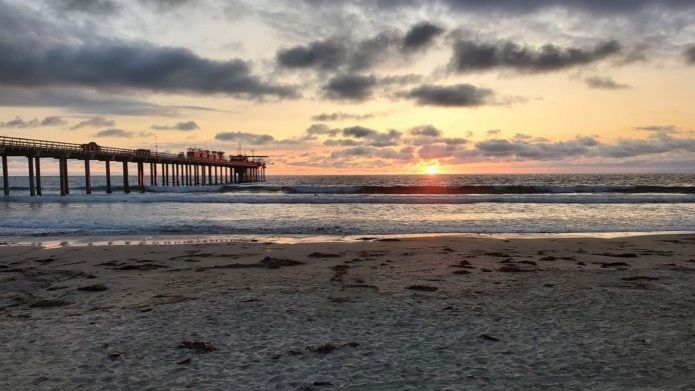
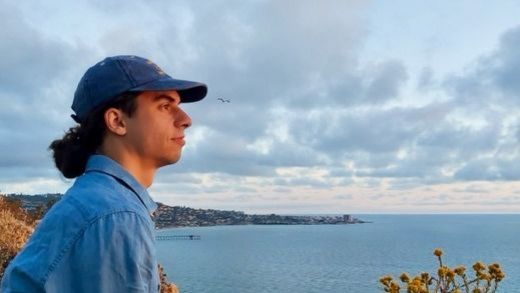
Text: Pablo Sebastia Saez
California Dreamin’
Nods, smiles… How’re the waves? This is the perfect conversation starter for an oceanographer spending the summer in California. Hella chillin, bro!
But let’s get to business… Just a little, after I’ll tell you about the fun part. During the summer of 2023 I spent almost two months at Scripps Institution of Oceanography in San Diego, California. The decision came to life after a brainstorming session with my supervisor on who (a topic-wise related and experienced researcher) and where (an oceanographic institute that could open new doors) could I visit, that could provide further, new, groundbreaking, specialized, state-of-the-art insights about internal gravity waves and their interaction with the background environment. And the winner was … (drum roll, please) Prof. Dr. William R. Young! After developing and proposing a feasable working structure for the research stay and several meetings…, after applying for the visa, finding accomodation, working myself through a whole load of paper work and packing my bags…, I was finally ready to catch this wave, ride it out, and let the californian vibe wash over me.
I went to the US with a clear and clean research topic, but as in surfing, sometimes it’s better to let the wave tune you into the right direction. During long eye-opening discussions with Prof. Young we stumble upon an unresolved problem within the direction of the scope of my dissertation, so we decided to reformulate the research question of my upcoming work. Within the two months at Scripps I had the chance to get to know other PhDs, PostDocs and professors from various research disciplines. I took advantage and attended seminars offered by both visiting as well as in-house researchers. I joined social events organized by the institute. And I got the great opportunity to present my work, discuss my interests and raise awareness of the research done within TRR181. But most importantly, I came back to Hamburg with far more new and exciting research questions to be answered!
What I liked best?
I arrived in San Diego just on time for ‘May Gray and June Gloom’ with cloudy and cool weather, but we slowly drifted into the summer season with plenty Sunkissed mornings and sunset wave rides. These together with endless nature getaways, road trips around Southern California and the legendary TGF were the highlights of this amazing journey! There remains naught else for me to express but my gratitude to the TRR181.
Research Stay in Texas by Paul Holst (April 23)
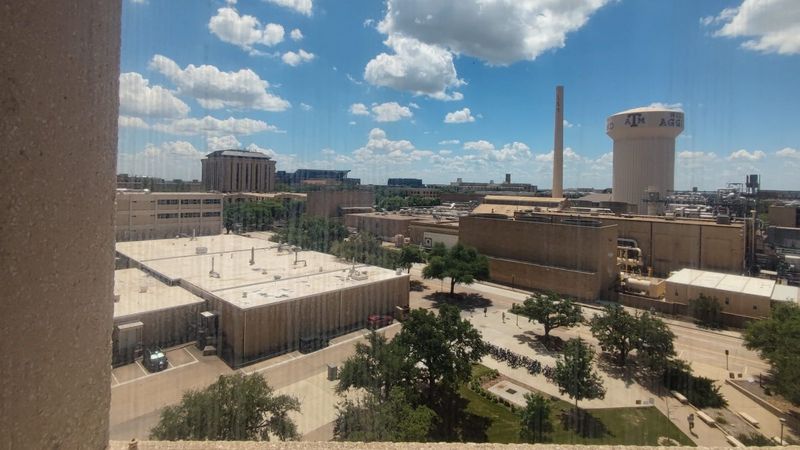
Text: Paul Holst
In April this year, I had the unique opportunity to enjoy a 2-week stay in College Station, USA, at Texas A&M University to visit Edriss Titi, who is a professor of nonlinear mathematical science. Professor Edriss Titi is a worldwide renowned applied mathematician who specializes in the mathematical study of problems from fluid dynamics, nonlinear partial differential equations, and in a dynamical systems approach to turbulence. His contributions to these areas are of the highest calibre and practical impact.
After hearing about Edriss Titi's expertise a few months before my research stay and after a simple email to him in which I briefly introduced myself and my research work, a good exchange of information with him developed, I was already very excited to do research together with him and learn from him during the research stay planned shortly thereafter in April. When I arrived in Texas shortly after Easter in April, we started working together on my research topic almost immediately. We talked daily at selected times from then on and made good progress. I greatly benefited from the conversations with him and learned new methods and aspects of my research topic and, even more generally, of the topics in my research area. The conversations I had with Xin Liu, one of the postdocs in Edriss Titi's research group at Texas A&M University, were also very helpful. At the end of my time in Texas, our conversations even resulted in a meaningful outcome regarding my research topic.
In between the meetings I had with Edriss Titi, I worked a lot on the exercises he gave me as well as a lot on my research topic. Away from my research work, I mostly explored the town of College Station on a bicycle in my scarce free time. During these explorations, I especially remembered a couple of beautiful green parks that College Station has to offer, as well as the impressive mansion district. There were also long distances that I had to travel to get from one place to another in College Station. This then gave me a sense, in those moments when I was out of breath, of why even many local people thought you needed a car to get from A to B in Texas.
After my return, I was very happy with the experience, knowledge, and results I was able to gain in Texas. The whole experience I had there has advanced me both scientifically and personally. I am very grateful for this and can therefore only recommend that everyone take advantage of the opportunity of a research stay.
Research Stay in Brest by Mariana Lage (Dec 22)
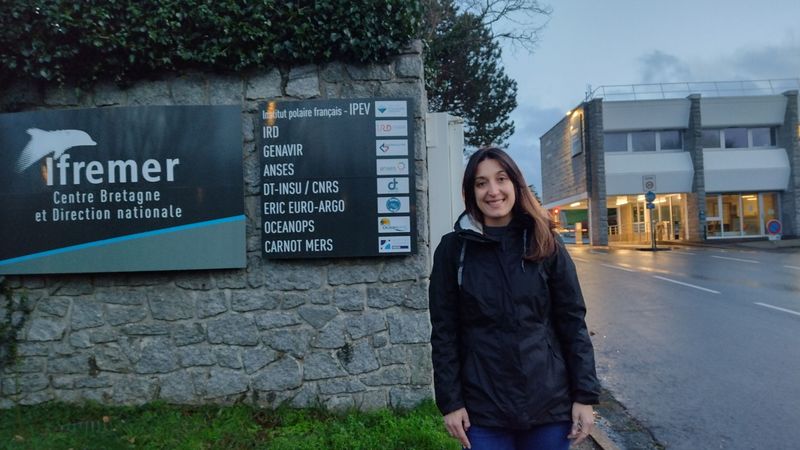
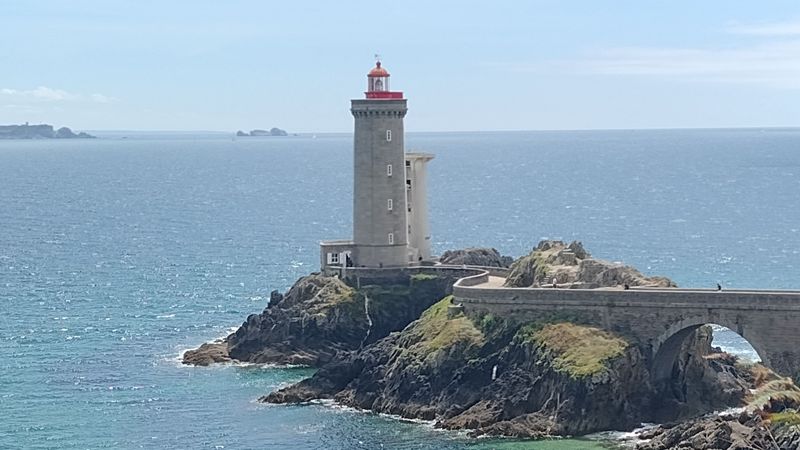
Text: Mariana Lage
One of the best parts of being a scientist in my opinion is to go abroad, meet new researchers and discuss ideas. It is amazing to see what other scientists are doing and how different the institutes are. Last year I had the opportunity to go to Ifremer (Institut français de recherche pour l'exploitation de la mer), in Brest, Brittany, France, and all started with a simple email to Claire Ménesguen introducing myself and asking whether I could visit the institute.
Claire is one of the team leaders of the Ocean Scale Interactions group at the Laboratory for Ocean Physics and Satellite remote sensing (LOPS) together with Jonathan Gula. The main focus of the group is to study ocean dynamics with a particular interest in small horizontal and temporal scales. Once the collaboration was settled and I arrived in Brest, we had several meetings to start planning the structure of the upcoming work. The infrastructure at Ifremer is great, and I met many PhD students and posdocs. As the time and work progressed, we decide to slightly modify our initial plan. Science is highly non-linear, so we had to adapt given the results we obtained with some of the analyses. The good part about that is that I was able to constantly discuss not only with Claire (and Jeff), but also with a lot of people from both Ifremer and LOPS. Because people have different backgrounds, we were able to approach my research topic from many different angles, which led to many nice ideas.
Apart from work (because it would be a shame not to enjoy Brittany’s landscape), I enjoyed the weekends hiking and traveling to small cities around Brest, and, of course, eating! Brittany is very well-known for crêpes, sea food (oysters!) and caramel, which are musts to try when you are there. Brest is on the west coast of France and the landscape is just stunning! The color of the water, the lighthouses and the shape of the coast make this city quite unique. There is also an Aquarium which is really worth visiting. One curiosity from there is that they have their own language (Breton, or Brezhoneg), although nowadays French is the main language spoken. Another curiosity is that it rains a lot, and the weather can easily change from heavy storm to shining sun in a matter of hours.
After my return, Claire and I are still in close contact and we are already planning the next steps regarding our collaborative research. My time there was really pleasant and fruitful and a second research stay is planned in October 2023. I really recommend sometime abroad for everyone especially because the TRR provides the most difficult thing to get: money. This is a unique opportunity to gather different opinions about one’s research topic and to get people to know you too. I left behind many open doors and I am really excited to continue working with all the people I met!
Research Stay in Miami by Janina Tenhaus (Aug 22)
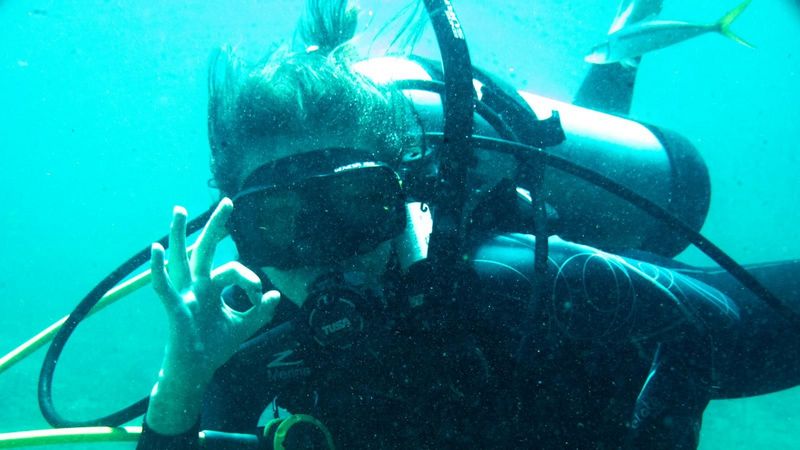
Text: Janina Tenhaus
Last year I was asked if I would like to participate in a wind-wave project at the Alfred C. Glassell, Jr. SUSTAIN Laboratory in Miami, USA, for three weeks. After listening to the song "Miami" by Will Smith several times, I felt well prepared and started organizing the trip, especially the funding by the TRR. The wind-wave tank is top-notch, and I was very excited when everything was approved. After my arrival, I met the scientists from Columbia University, U.S. Naval Research Laboratory, University of New Hampshire, and of course University of Miami. From now on, we spent almost every day in the dark lab with no daylight – thanks to the Particle Image Velocimetry measurements. Outside it was summer and mosquito season, so we did not complain much. We survived working on weekends with strong Cuban coffee (do you really want the real one and no sleep for a week?). But the experimental work did not only take place in the lab; discovering the great dive sites of Miami was also part of my tight schedule. Shortly before my return flight, we cooled the tank, whereupon it began to leak as all the silicone seals contracted. This reminded me of the rainy weather in Hamburg, and I knew it was time to come home. I am very grateful for this experience and would recommend everyone not miss the opportunity to do a research stay.